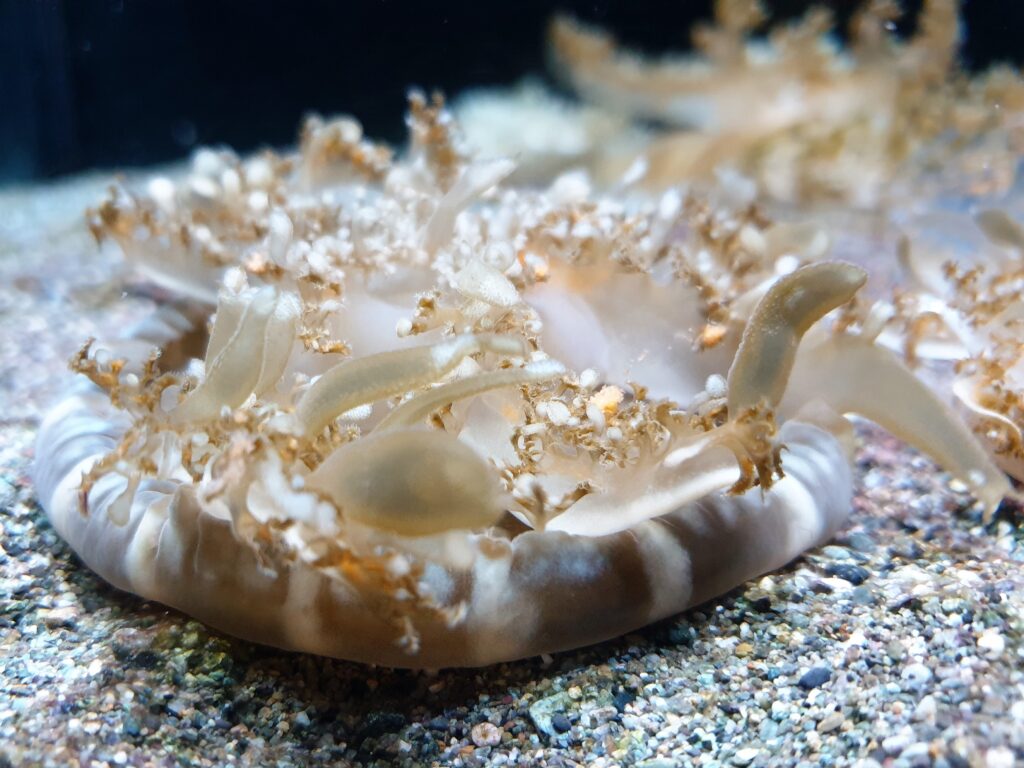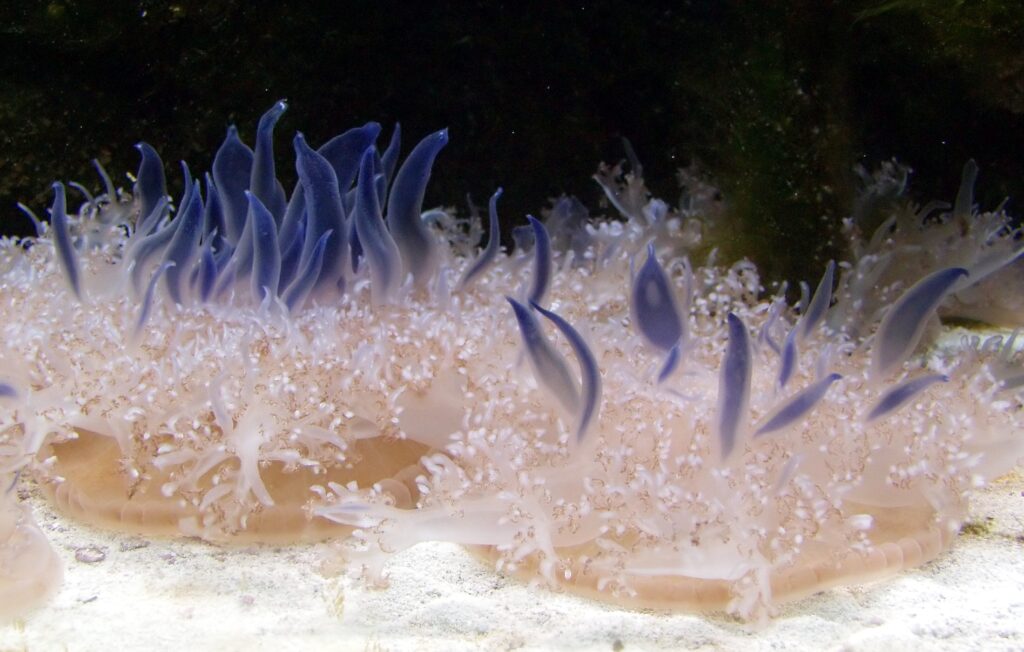Jellyfish are old — like really old! Scientists believe the oldest ancestors of modern jellies lived at least 500 million years ago. Some estimate this number to be closer to 700 million years ago. This makes these gelatinous blobs three times older than dinosaurs! They are actually the oldest multi-cellular animals on the planet. With that much time, it’s no wonder that some species evolved with really cool characteristics. In honor of World Jellyfish Day (Nov. 3), here are some of the coolest jellies in our ocean.
 Jellyfish come in different shapes, colors and sizes, all with unique adaptations.
Jellyfish come in different shapes, colors and sizes, all with unique adaptations.
1. Dancing Golden Jellies
In Ongeim’l Tketau lake in Palau, millions of harmless golden jellyfish go through a mesmerizing daily migration. They’re beautiful, constantly moving, and, most importantly for humans, “stingless.”
“Jellyfish Lake” actually formed between 5,000 and 15,000 years ago. During a period of rising seas, the ocean overtook the beaches and brought jellies with it. When the water receded, it created saltwater lakes and trapped the jellyfish.
Cut off from the ocean, these jellies evolved over time. They became “stingless” (harmless to humans). Instead, symbiotic algae called zooxanthellae that live in their tissues provide them with energy. Golden jellies provide the zooxanthellae with a safe place to live (within their bodies). In exchange, the algae photosynthesize and provide the jellies with sugars. Because of this exchange, the golden jellies migrate every day to follow the sun. This maximizes photosynthesis by the algae.
Ongeim’l Tketau is the only local lake with jellies that invites tourists to come and enjoy the show. While scuba diving isn’t allowed, snorkelers and swimmers can jump right in. The experience is bucket-list-worthy. World Wildlife Foundation likened the experience to being inside “a living lava lamp.”
 Golden jellies in “Jellyfish Lake” in Palau
Golden jellies in “Jellyfish Lake” in Palau
2. The Versatile Upside-Down Cassiopea
Cassiopea jellyfish are highly versatile. They evolved creative ways to get energy in shallow, sandy and muddy environments where they are found.
These creatures live their lives upside down but are “headed in the right direction.” They’re named after the Cassiopeia constellation in the sky, which appears upside down.
Much like the golden jellies in Palau, Cassiopea form symbiotic relationships with organisms that provide them with energy in exchange for shelter. In particular, photosynthetic zooxanthellae live in the tentacles of Cassiopea and give them their color. Therefore, the jellies will rest on their backs in the sun, exposing their tentacles (and the algae) to sunlight for photosynthesis.
Moreover, what sets Cassiopea apart is that it can switch which symbiotic organism it’s housing based on environmental changes. When conditions shift, Cassiopea might swap symbiont species to adapt to stressors.
 Cassiopea jellyfish can switch symbionts depending on the local conditions.
Cassiopea jellyfish can switch symbionts depending on the local conditions.
 The upside-down jellyfish rests on its back to give the algae in its tentacles maximum sunlight exposure.
The upside-down jellyfish rests on its back to give the algae in its tentacles maximum sunlight exposure.
3. Immortal Jellyfish That Never Die
Lastly, we’ll learn about the immortal jellyfish, which has found a way to do the impossible: it lives forever. This jelly lives a mostly normal life, going through the usual life stages from polyp to baby jelly to adult.
After that, things get interesting. When this jelly gets hungry or stressed, it can age backward to survive. This process is “cellular transdifferentiation.” Basically, the jellyfish “flips a switch” internally that restarts its cells. It morphs into a ball of tissue and stem cells and sinks to the ocean floor. In days, it becomes a genetically-identical polyp to itself — just at an earlier stage of development. This new polyp will develop and grow normally until it becomes stressed. Then, it will reverse-grow and start over. It can do this again and again.
Immortal jellyfish can regenerate indefinitely, which is why they seem to live forever. This also allows them to endure difficult conditions and times when food is scarce. Indeed, the jelly “dies” only if it gets disease or eaten.
Discover Other Ancient Species
Read More About Jellyfish
 Snorkeling in “Jellyfish Lake” in Palau
Snorkeling in “Jellyfish Lake” in Palau
Share This
